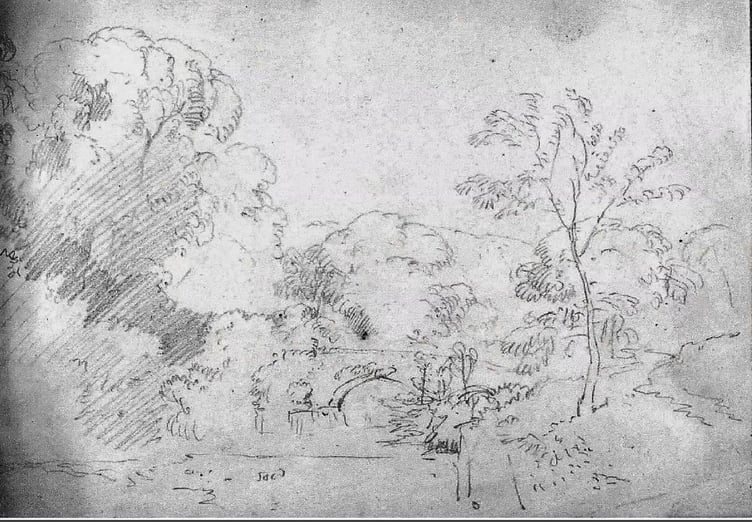THERE IS nothing new about the current travails hitting motorists due to the closure of Denham Bridge due to drivers hitting and it and putting it out of action for weeks, writes Clive Charlton, of Bere Local History Group.
For a start, the dangers of the road layout, a right angle bend on one side of the bridge at the bottom of a steel valley, were dramatically illustrated by the brave actions of a man who jumped onto a run-away car with two children on board and the parents outside the car. He managed to prevent the car crashing and saved the chldren’s live, despite failed breaks, according to a news report in 1936.
In 1937 Bere Ferrers Parish Council wrote about its frustrations to Tavistock Rural District Council in the same year, demanding an ‘elaborate’ danger sign at the top of Denham Bridge hill to ‘reinforce’ the warning that trucks should turn back, because of the steep hill and avoid risking a runaway accident.
There have been aspirations for an alternative River Tavy crossing for a long time. For example St Andrew’s churchwarden’s accounts for 1771 says: ‘Paid the stone mason for his journey expenses to view the intended brdge at Churck’s Ford’. This implies there must have been serious discussions about a new road bridge as long ago as the 18th Century.
It is thought Denham Bridge was built by and for the monks of Buckland Abbey, possibly to give them easier access to the woodlands on the Bere side of the Tavy valley. It has been rebuilt or patched up several times in its long history, though the packhorses would not have been quite as destructive as the lorries of today. It is suspected the increase in vehicle damage to the stone parapet is down to the more frequent journeys to Bere Alston made by food and parcel home delivery drivers.
These drivers are usually under pressure of time, ruled by their sat navs and less likely to know the dangers of steep hills and sharp bends. on what looks like a straightforward shortest route to their destinations.
After World War One, Bere Ferrers Parish Council began lobbying hard for a new road bridge – this time from Bere Ferrers across to Blaxton. However, this pressure proved to be in vain, as did the recommendation in the 1943 ‘Abercrombie Plan’ for the rebuilding of Plymouth.
Pressure had also come earlier come from Plymouth MP, Jimmy Moses in 1929 and co-signed by senior Labour politician Herbert Morrison, who was the Minister of Transport at the time. However, even this notable intervention failed and Morrison apologised for not being able to influence a decision not to fund a bridge. In 1937, the parish council was keen to be absorbed by Plymouth and in the process have its bid for a new bridge to be taken seriously.
In contrast,Denham Bridge was also considered picturesque in the eighteenth century – idealised in a sketch by painter JMW Turner and by William Payne.





Comments
This article has no comments yet. Be the first to leave a comment.